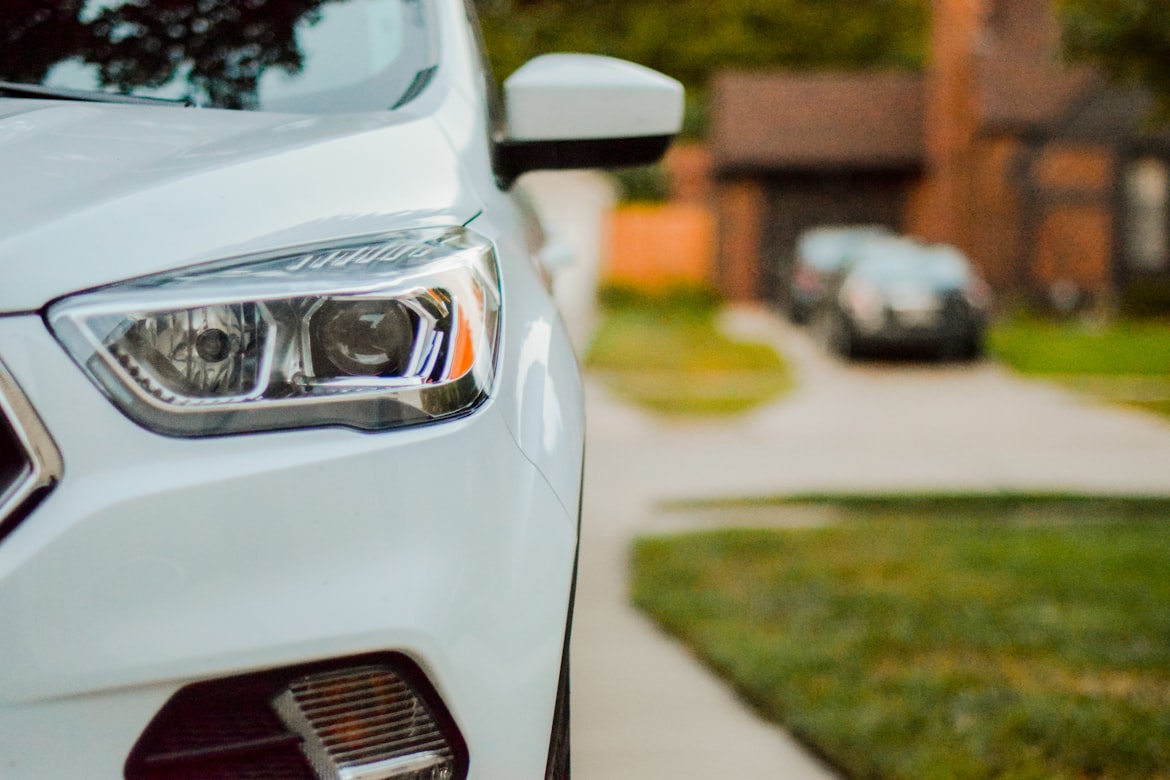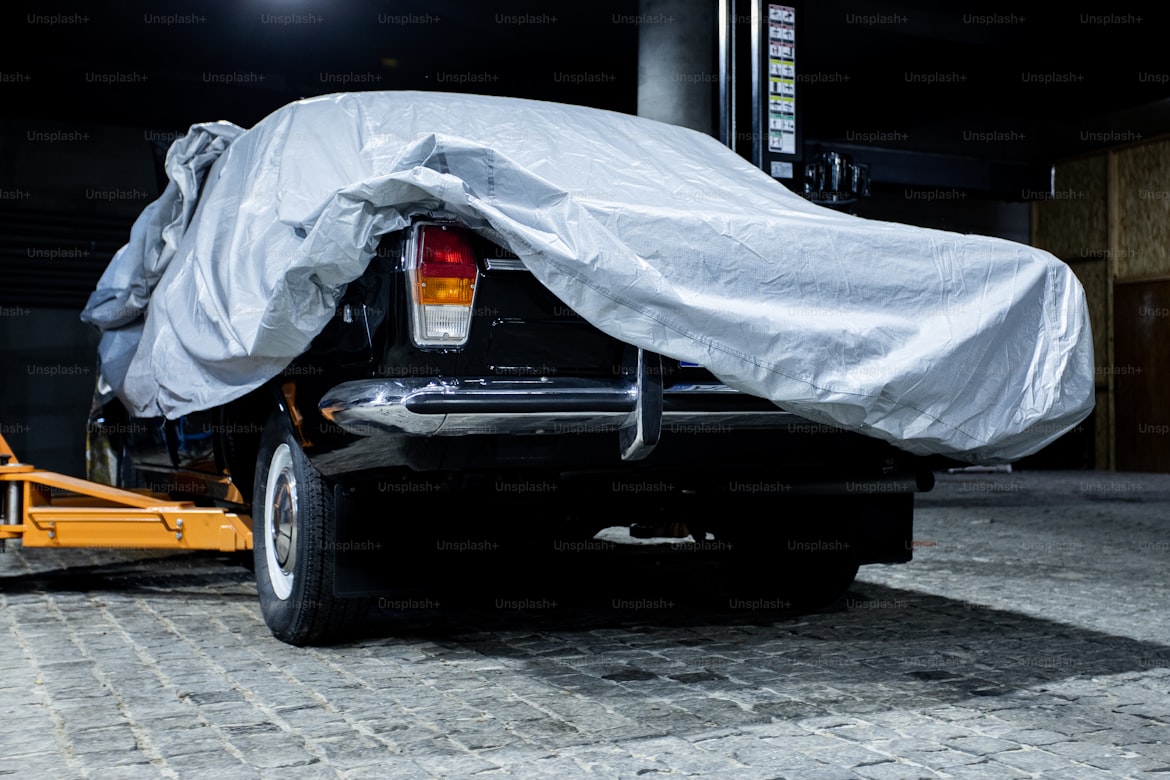Considering long-term vehicle storage? Can’t help but worry prolonged inactivity will leave your car worse for wear?
As a responsible car owner, it’s normal for questions like these to run through your mind at (seemingly) a million miles a minute. If I store my car in my garage for six months straight, will it start again? How long can I safely store my car before damage starts to set in? If I need to store my car for several months at a time, is it less risky to store it in an indoor storage unit than an outdoor parking space?
It’s time to put a screeching halt to those [rubber] burning questions. In this blog post, we’ll explore the following:
• The factors that impact the amount of inactivity time a car can safely endure
• The effects of prolonged parking on a vehicle’s internal makeup
• How to prepare your car for risk-free, long-term storage.
By the end, you’ll be equipped with the knowledge you need to keep your car in optimal condition, even during extended periods of inactivity.

Short Summary
- The amount of inactivity a car can withstand—without sustaining damage—depends on the climate, parking location, and the vehicle’s overall condition.
- Regular maintenance and protective measures are essential to expand the window in which a car can sit idly, without its condition being compromised.
- Periodic starting/driving, car covers, and sunshades can all help your vehicle run at peak performance, even while parked for extended periods.
How Long Can a Car Sit Without Being Driven
A car’s threshold for inactivity is impacted by various factors, such as climate, parking location, and vehicle condition.
Generally speaking, if a car sits without being driven for more than two weeks, technical difficulties may begin to surface.
If you leave your car unattended for six months, you can inflict severe (and potentially irreparable) damage to your vehicle’s engine.
However, outcomes tend to vary on a case-by-case basis, making it critical to account for factors like climate, indoor vs. outdoor storage, and the vehicle’s condition.
Effect of a Vehicle’s Condition on the Safe Inactivity Window
A well-maintained vehicle can withstand longer periods of inactivity than a poorly maintained one.
If a car owner has kept up with routine maintenance (i.e. regular battery checks, fluid checks, and tire inspections), they may be able to leave their vehicle stationary for weeks or months longer than owners of run-down vehicles—without inflicting any damage.
Before storing your car for an extended period, make sure to address any existing maintenance issues and follow the recommendations provided in this blog post. By taking care of your car and addressing potential problems before they arise, you can potentially minimize the negative effects of long-term inactivity.
Effect of Climate on the Safe Inactivity Window
Climate plays a significant role in how long a car can sit without being driven. At either extreme—very hot or very old—an inactive car is at greater risk of damage.
Your vehicle can sustain the following damages if exposed to extreme cold or extreme heat for prolonged periods of time.
Prolonged exposure to cold
- A car battery will die at a much faster rate in colder weather
- Tires will lose air at a faster rate in colder weather
Prolonged exposure to heat
- Weatherstripping begins to dry and eventually fails, causing leaks and increasing wind noise
- Paint is more likely to peel and flake
- Headlights begin to yellow
When storing your vehicle in the heat for extended periods, car covers and sunshades are essential for prolonging the amount of time a vehicle can [safely] remain inactive, without incurring damage. Parking in a shaded area can also help minimize sun damage to both the exterior and interior of your car.

Effect of Indoor vs. Outdoor Storage on Safe Inactivity Window
Because extreme heat and cold can ravage your vehicle—especially when your vehicle is exposed to these extreme temperatures for extended periods—you might consider storing your vehicle in an indoor, climate-controlled storage unit or insulated garage space (that measures at least 10’x20′ or 10’x30′).
New to the world of car storage, rookies may assume that a traditional enclosed storage space (Think an indoor drive-up unit with a roll-up garage door) will be enough to mitigate damage like yellowed headlights. But that’s far from the reality.
While an enclosed storage unit may shield your car from direct UV exposure, non-climatized storage units can still reach temperatures exceeding 100 °F, spelling disaster for your car’s battery and tires. In times of extreme heat, car batteries already struggle to hold a charge. Factor in the strain of extended inactivity exerted on your vehicle’s battery, and you could end up at your local repair shop, forking over the $200-$250 for a new battery.
Because not all indoor units are climate controlled, your storage unit’s internal temperatures will often correspond with (or exceed) the daily temperature highs, evening the playing field between indoor and outdoor storage options. Garages show similar results, often reaching temperatures that are 10-18° F higher than the outside temperature. With both outdoor and non-climatized indoor units posing similar levels of risk when it comes to heat damage, drivers may opt for outdoor vehicle storage to save some extra cash.
To minimize inactivity-related damage, outdoor parking will require additional precautions, such as using an under-car containment mat to prevent moisture transfer to the vehicle’s underside.
The Effects of Prolonged Inactivity on Your Car
Extended periods of inactivity can negatively impact a car in the following ways:
- Battery life: A car may lose its charge if left stationary for longer than normal.
- Tire condition: Tires can lose air pressure, develop flat spots, and deform if subject to long-term storage.
- Fluid quality: Fluids such as engine oil, transmission fluid, coolant, and differential fluids may degrade over time if a car is not regularly driven.
How to Prevent Damage Caused By Inactivity
Leaving your car unused for months to years may be inevitable—should you accept a temporary relocation assignment, receive notice of a short or long-term deployment, or book an extended vacation that totals up to 30 days of PTO (or more). In these cases, you’ll want to take the necessary precautions to ensure these months of idle time don’t translate to hundreds or thousands in repair costs.
To prevent the issues noted above, it’s crucial to perform regular maintenance and follow the guidelines provided.
Battery Life and Maintenance
Avoid drained batteries and shaky car starts by practicing routine battery maintenance. If you’re worried about the longevity of your car’s battery, you can also invest in the right gizmos and gadgets like a trickle charger or a battery tender.

A trickle charger with an automatic maintenance mode is key to sustaining a car battery’s charge when parked indoors. Disconnecting the battery from the car can also help prevent a dead battery when a car is left unattended for an extended duration.
A battery tender, which slowly replenishes the battery’s charge on an ongoing basis while a car is not in use, is advisable when your car is parked for a month or longer.
By regularly maintaining your car’s battery, you can avoid the inconvenience of a dead battery and ensure your car is ready to hit the road when needed.
Tire Care and Prevention of Flat Spots
Flat spots are a common symptom of prolonged vehicle inactivity. The cure? Overfilling your tires. By overfilling your tires by a few PSI, you can maintain their structural integrity, even when temperatures fluctuate. Before shuttling your car into long-term storage, check for tire cracks. If you spot any signs of cracking, replace your tires before storage.
Fluids and Fuel Quality
Regularly checking and replacing fluids and fuel in your gas tank can prevent degradation and ensure optimal vehicle performance.
Note that gasoline becomes unusable after three to six months, so it’s essential to drain and replenish the fuel if it has been sitting for a prolonged period. If fuel quality is a concern, consider using a fuel stabilizer, a mixture that can keep fuel usable for up to two years.
Reviving Your Car After Extended Parking
Once the storage period is over, it’s time to revive your car and hit the road again. Reviving a car after extended parking isn’t always as simple as turning the key in the ignition., especially if you’ve left your car parked in the same place for 2+ years.
Inspecting Tires and Fluids
Before driving a car that has been parked for a long time, it’s essential to check the following:
- Tire pressure
- Transmission fluid levels
- Coolant levels
- Differential fluid levels
In addition to checking tire pressure and fluid levels, it’s also important to examine the tires for any leaks, cracks, or other damage. By taking the time to inspect your car’s tires and fluids, you can ensure it’s ready for a smooth and safe ride after extended parking.
Starting the Engine Safely
Safely starting the engine involves turning the crankshaft by hand and following proper procedures to avoid damage. This step is essential to ensure that the engine and battery are not damaged and that the car is functioning correctly.

Driving Tips for Post-Storage
After reviving your car, gradually increase the speed of the car in a low-traffic area and monitor the gauges to ensure the car is not overheating and that oil is flowing adequately.
Summary
In conclusion, knowing how long a car can sit without being driven is essential for maintaining its optimal condition during extended periods of inactivity. By understanding the factors that influence idle time, the effects of prolonged parking on key car components, and the importance of proper preparation for long-term storage, you can minimize the negative effects of prolonged parking and ensure your car is ready for the road whenever you are.
Long-term car storage isn’t without its risks. To minimize the safety risks of long-term storage, consider Neighbor when searching for climate-controlled car storage.
Frequently Asked Questions
How long is too long without driving a car?
Experts recommend driving your car every two to three weeks to keep it in running condition. Ideally, you should not let your vehicle sit unused for more than two weeks. To prevent unnecessary repairs and ensure your vehicle is ready to go, start it up and drive it for 15-30 minutes a few times within the month.
Can I leave my car unused for 3 months?
Leaving a car unused for three months is not ideal, as the battery could die within this span of time. To prevent battery drainage, it is best to start the vehicle and drive it for 10 miles at least every couple of weeks when not in regular use.
How long does a car battery last without driving?
Because the car battery is in use even when the car isn’t being driven, your car battery will only last only four to eight weeks without a charge.